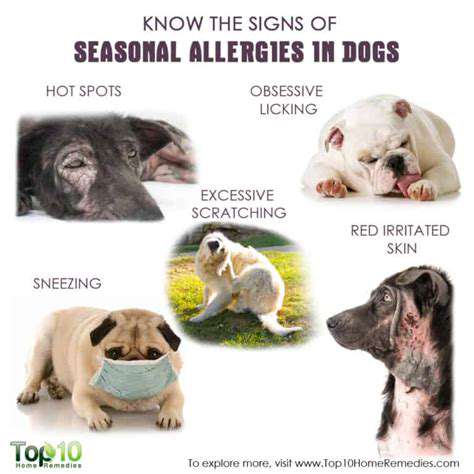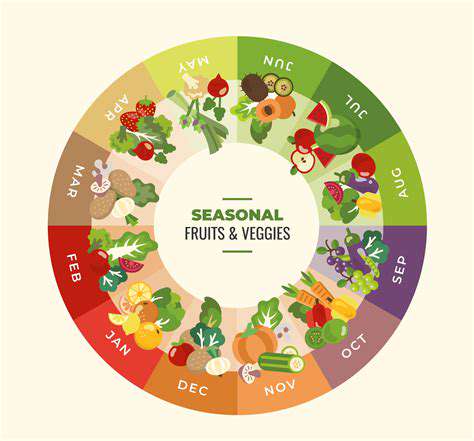How to prepare your dog for seasonal changes
Recognizing the Signs of Seasonal Changes in Dogs

Understanding the Common Symptoms
As seasons shift, many dogs display noticeable behavioral and physical changes. Spotting these early signs can make all the difference in your pet's comfort. Watch for unusual lethargy, changes in sleep patterns, or shifts in appetite - these often signal seasonal discomfort. Some breeds with thick coats might pant excessively during warmer months, while short-haired dogs may shiver more in cold weather.
Another telltale sign involves grooming habits. You might notice your dog licking their paws more frequently during allergy season or shedding excessively during spring and fall. These natural responses help them adapt to environmental changes, but extreme versions could indicate underlying issues.
Impact on Mood and Energy Levels
Seasonal transitions frequently affect canine energy levels and temperament. Your normally playful pup might become withdrawn in extreme heat, or show restlessness during long winter nights. These mood shifts mirror how humans experience seasonal changes, though dogs express them differently.
The key lies in recognizing your dog's baseline behavior. A slight decrease in afternoon walks during summer heat makes sense, but complete disinterest in favorite activities warrants attention. Similarly, excessive nighttime pacing during winter might suggest discomfort from the cold.
Changes in Sleep Patterns
Daylight duration significantly impacts canine sleep cycles. You may notice your dog sleeping more during short winter days or becoming restless on long summer evenings. These adjustments are normal, but drastic changes could indicate health issues.
Pay attention to where your dog chooses to sleep seasonally. Cool tile floors become summer favorites, while warm carpets and sunny spots get claimed in winter. This natural thermoregulation helps them maintain comfort.
Appetite and Weight Changes
Many dogs naturally adjust their food intake with seasonal activity levels. Reduced winter exercise might lead to weight gain if portions aren't adjusted, while summer heat can temporarily decrease appetite. These fluctuations become concerning only when extreme or prolonged.
Hydration needs also change dramatically between seasons. Monitor water bowl frequency - summer demands constant refills, while winter might see less consumption. Ice formation in outdoor bowls during cold months can dangerously limit access.
Social Withdrawal and Isolation
Dogs often modify social behaviors seasonally. Heat-sensitive breeds might avoid cuddles in summer but become clingy in winter, while snow-loving dogs may beg for extra outdoor time. These preferences reflect their natural responses to environmental conditions.
Extreme isolation or aggression changes, however, could indicate discomfort. A dog that stops greeting family members or hides constantly may be experiencing seasonal stress or pain that requires attention.
Difficulty Concentrating and Focusing
Seasonal distractions can challenge canine focus. Scent-driven dogs may become single-minded during fall when animal activity increases, while spring birds might completely derail training sessions. These are normal seasonal focus shifts rather than behavioral problems.
However, if your dog shows uncharacteristic confusion or disorientation during weather changes, consult your veterinarian. Sudden cognitive changes could indicate underlying health issues exacerbated by seasonal transitions.
Managing Temperature Fluctuations Effectively
Understanding Seasonal Temperature Changes
Canine temperature regulation differs significantly from humans, making them vulnerable to seasonal extremes. Their limited sweat glands (primarily in paw pads) force reliance on panting and behavioral adaptations for temperature control.
Breed characteristics dramatically affect temperature tolerance. Northern breeds like Huskies thrive in cold but struggle with heat, while Greyhounds shiver in mild chill. Recognizing your dog's genetic predispositions helps anticipate their seasonal needs.
Protecting Your Dog from Heat
Heatstroke prevention requires proactive measures. Schedule walks during cooler morning/evening hours in summer, and always check pavement temperature with your hand before walks. If it's too hot for your palm, it's burning your dog's paws.
Create cooling stations at home with damp towels, elevated beds for airflow, and multiple water stations. Some owners freeze broth cubes or make pupsicles for hydrating summer treats. Remember that obese, elderly, or flat-faced dogs need extra heat precautions.
Preparing for Cold Weather
Winter preparation goes beyond cute sweaters. Paw protection becomes crucial as ice-melting chemicals can burn pads and cause toxicity when licked. Consider dog boots or protective wax for winter walks.
Indoor humidity matters too - dry winter air can cause cracked paws and nasal discomfort. A humidifier near your dog's sleeping area helps, as does slightly increasing their omega-3 fatty acids for skin health.
Maintaining a Consistent Routine
Dogs thrive on predictability, especially during seasonal transitions. Gradually adjust walk times as daylight changes to prevent digestive upset or anxiety. A 15-minute weekly shift works better than sudden hour changes when clocks adjust.
Seasonal activity substitutions maintain stimulation when weather limits outdoor time. Food puzzles, indoor fetch down hallways, or nosework games provide mental exercise during extreme weather days.
Dietary Adjustments for Seasonal Changes

Dietary Adjustments for Spring
Spring often increases activity levels, requiring slight calorie adjustments. Consider adding fresh, dog-safe spring vegetables like steamed green beans or carrots as low-calorie snacks. Many dogs enjoy the crunch and novelty.
Watch for spring allergies manifesting as itchy skin or digestive issues. Some owners introduce local honey (in tiny amounts) to help build pollen resistance, though consult your vet first.
Dietary Adjustments for Summer
Hydration becomes paramount in summer. Add water to kibble or offer broth ice cubes to increase fluid intake. Some dogs prefer room temperature water over icy cold during heat.
Food safety matters more in heat - don't leave wet food out, and wash bowls daily to prevent bacterial growth. Consider smaller, more frequent meals if appetite decreases in high temperatures.
Dietary Adjustments for Autumn
As activity patterns change with cooler weather, monitor weight closely. Many working dogs naturally gain winter weight, but pets may need portion adjustments. Pumpkin (plain, canned) adds fiber for digestive health during seasonal transitions.
Beware seasonal hazards like mushrooms in fall walks and rich holiday foods. Establish clear rules about human food early before Thanksgiving temptations arise.
Dietary Adjustments for Winter
Outdoor dogs may need 10-15% more calories in extreme cold, while couch companions likely need less. Warm meals (slightly heated broth or wet food) appeal more in winter and provide comforting routine.
Joint supplements often help older dogs with winter stiffness. Fish oil supports skin and coat health when indoor heating dries the air. Always introduce dietary changes gradually.
Adapting to Dietary Restrictions
Seasonal treats and table scraps pose special risks for dogs with allergies or conditions like pancreatitis. Prepare safe alternatives in advance for holidays - frozen banana slices instead of rich desserts, or plain cooked turkey instead of seasoned leftovers.
Maintaining a Balanced Diet Throughout the Year
While adjusting for seasons, consistency in core nutrition matters most. Sudden food changes can upset digestion, so transition gradually between formulations. Keep a food journal to track what works best during different seasons.
Seasonal Ingredient Variety
Rotating protein sources seasonally may benefit some dogs, but consult your vet first. Local, seasonal ingredients often provide fresher nutrients - consider farmer's markets for dog-safe produce when possible.
- Exploring the Differences in Dog Coat Types: A Comprehensive Guide
- Essential tips for cleaning your dog's ears
- Enhancing Mental Well being Through Daily Practices
- Essential items every new dog owner needs
- How to help your dog interact well with other pets
- Caring for dogs with arthritis
- Caring for your aging dog’s teeth and gums
- How to prevent ear infections in dogs
- Preparing your dog for grooming during summer
- How to recognize signs of illness in your dog
- Tips for keeping your dog active in the winter
- How to adapt your home for an elderly dog